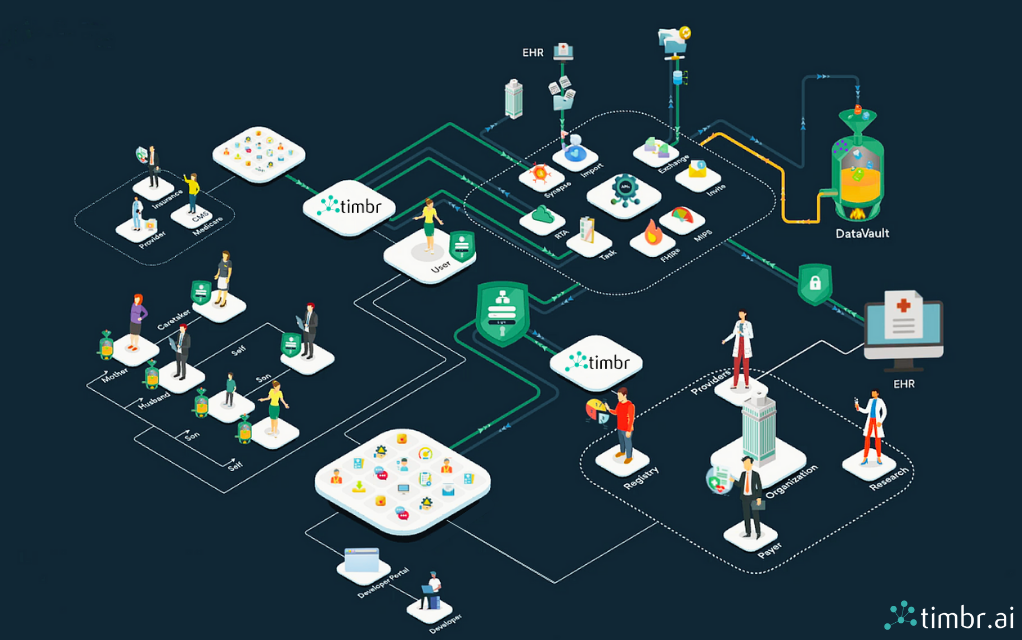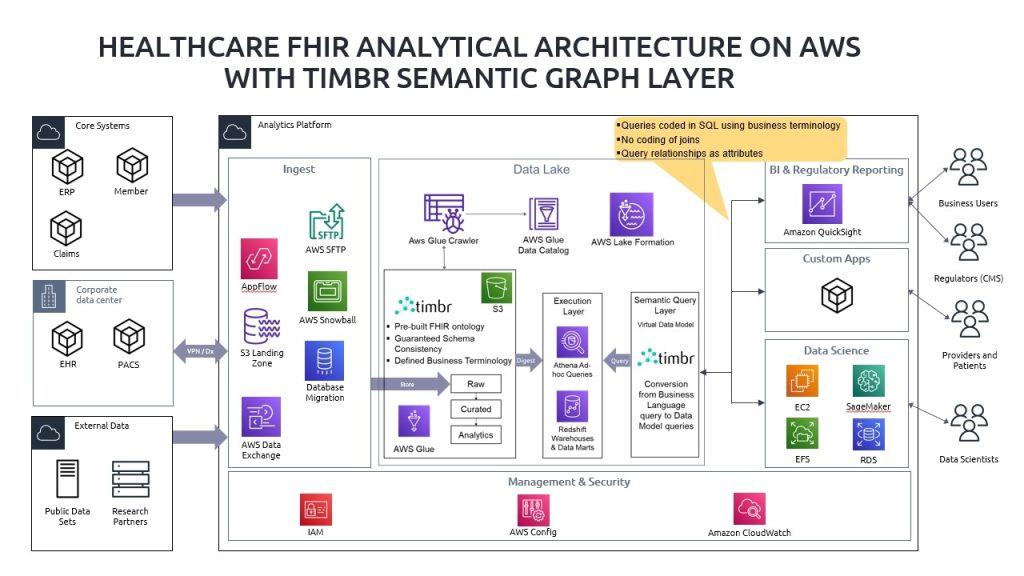
Intro
HL7®’s FHIR® – Fast Healthcare Interoperability Resources’ standard is a set of rules and specifications for exchanging electronic healthcare data. It is designed to be flexible and adaptable, to meet the needs of developers, healthcare providers, and other partners.
In collaboration with Capgemini, we created a healthcare reference architecture for AWS that leverages HL7 FHIR data definitions and ontology, to support healthcare data interoperability.
Our solution provides a pre-built FHIR ontology, accessible in SQL, leveraging popular Amazon Web Services (AWS) DBs like Redshift , Athena and Aurora with guaranteed schema consistency and a defined business terminology that facilities consumption of healthcare data.
Building the Schema
Timbr leverages HL7 FHIR data definitions and ontology, creating a pre-built target state schema.
Using our advanced AI reasoner, we suggest automated mappings of existing DB schemas to the FHIR ontology, and data engineers can accept or modify the suggested relationships, and business SME’s can review them via graph visualizations.
Accessing the Data
When running SQL queries in Timbr using the FHIR ontology, Timbr automatically converts the queries into the schemas of the underlying databases (Redshift, Athena, Aurora), and generates the appropriate joins to return the results in the target schema, so there is no need to manually join tables in queries.
Relationships can be exposed as attributes and graph algorithms (adjacencies, neighborhood detection, similarities, etc.) can be performed on relational data without migrating it to a different data format, saving valuable time and resources.
Many thanks to Rajesh Iyer and Alexander Stufflebeam, from Capgemini for their initiative and valued advice.
For more information, contact us today.
How do you make your data smart?
Timbr virtually transforms existing databases into semantic SQL knowledge graphs with inference and graph capabilities, so data consumers can deliver fast answers and unique insights with minimal effort.




